General Information
- Name of Scenario: Imperium Romanum v 2.2
- Final Score: 25.9/30
(Breakdown: 0-10 terrible /11-15 Average/ 16-20 Good/ 21-25 Excellent/ 26+Best possible) - Name(s) of Author(s): Bernd Brosing (a.k.a. BeBro)
- Type of Scenario: Classic History
- Reviewed by: Kevin Klop (a.k.a. willemvanoranje)
Introduction
Bernd Brosing’s scenario Imperium Romanum is about the birth of the
city of Rome as a republic, to the time in which Rome had conquered the
whole Mediterranean and great parts of Europe as well. You begin with
the Samnites, Latins and Etrusks as your greatest threat. After that,
there are Greek and Celts who oppose the greatest threat within the
Italian homeland; or should I say: You are their greatest threat.
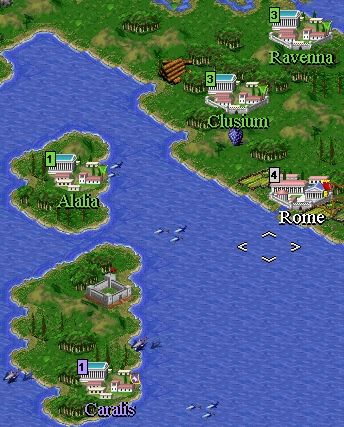
Playability – 5.5/6
The scenario’s main function is conquering; without it you can’t
survive. But also building plays a part in this scenario, you will need
engineers to build roads and connect all the cities with each other, or
rebuild destroyed cities (which I did; I rebuilt Carthago). By this, it
reflects the reality as it was the best way it can, since Civilization
II doesn’t give us the space to program large senate meetings and
complicated politics in it. The Romans were very militaristic; and
that’s exactly what’s the great thing in this scenario.
Playing this scenario is fun. You must make hard decisions
sometimes, and you don’t know if it’s the right one. Most of the time,
it was the right one, but sometimes, you can lose three or four cities
because you didn’t expect the enemy to have that much defensive units.
The scenario might take too long for some people; there is a lot to
conquer and some people might get bored when they start conquering the
Middle-East. That’s too bad, but I for one wouldn’t know how to change
this without messing up the purpose of this scenario.
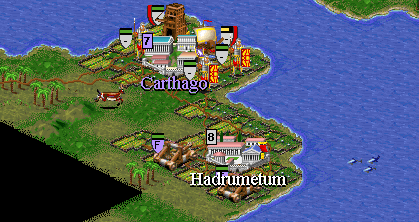 .
.
Image 1: The Fall of Carthago. The city of Hadrumetum is already taken.
Units – 5.5/6
The scenario uses 3 different unit-files, but all three of them are
almost the same. There are some small changes, to make the scenario
right with history. All units have been edited, and look very nice and
(for Civ II) realistic. The only thing is, that you probably build just
two different units. In the beginning, when you try to get control over
Italy, you can do with the Consular Legion and sometimes a small siege
unit, so all your cities keep building those. Later, when you start
attacks on Carthago and Macedonia, you will need Imperial Legions and
Siege tower, same thing when you invade the Persian Empire. Also one
type of ship will be used, to transport the units quickly from Italy
and Spain to the Middle-East. Maybe that’s something that could have
been done better; more variety in units. But I think we shouldn’t take
it so hard; almost all scenario creators have serious problems with the
balance of units, and BeBro did very very well in balancing his
scenario; every civ has its own defensive and offensive units; so you
won’t see a Celt in the Middle-East or a Persian chariot in Spain.
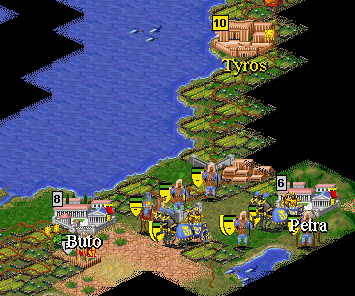
Image 2: The Persians don’t like it when their cities are being taken.
Research – 5/6
The tech tree was very interesting. For me, the invention of Siege
Units was very important, and I’m happy to say that this is historical
correct. The Romans learned about Siege Units in Greece. The Greek
forces could repel two invasions with their catapults and ballistas.
The Romans studied the weapons, and the third time they used catapults
as well and conquered Greece. Maybe this could have been done in the
scenario: the Romans can only research Siege Weapons after they took a
Greek city, or maybe the Greeks could have been a more siege-unit
civilization.
Most advances simply have the name of the unit or city improvement
they supply, which is a good thing on the one side because you don’t
have to check the civilopedia every time, but also is a bit too easy
for some people, who might think of it as ‘without inspiration or
creativity’. But for me, making the right techs with good names is
always hard, and in my opinion the way how BeBro did it is great.
It’s too bad that the tech tree wasn’t longer; by A.D. 35 I was
conquering the last city of the Macedonians and the westside of the
Persian Empire; and I was already at ‘Future Tech 79’. Maybe research
should be slowed down somehow, though this might give problems in the
earlier stages when research is needed.
The civilopedia isn’t taken care of for most things, but for the
wonders a great deal of information is provided. The thing is; for most
people only the wonders are interesting enough to write and read about.
Besides that, little (relevant) information can be given for the city
improvements. But just a few lines wouldn’t have been impossible I
think.
Not all in-game messages were changed, but then, they don’t need
to. There are few people who rewrite the entire game.txt, when the
messages already in are good enough.
Map & Terrain – 5/6
The map used in this scenario is logically chosen; it contains the
Mediterranean, parts of the Sahara Desert, the Middle-East, the Black
Sea area and whole Middle- and Northern-Europe (except for
Scandinavia). So all the relevant places are in the map. All cities are
placed at the right place, though man is still not sure where Alesia
was. Most city names are written the ‘Roman’ way (in Latin), but there
are a few that are written in the German/Western way. The most clear
example is the city of Jinjan; the Romans never had the ‘J’, so they
used the ‘I’. The Latin should be Iinian. But of course, this gives us
problems pronouncing it, so the choice isn’t without logic. Another
good example is the city of Byzanz, which was first called Byzantium by
the Romans, and later Constantinople. Byzanz is probably the German
name, and it’s a little spot on the almost clean sheet of errors and
negative points of this scenario.
The terrain itself is done very nice; it creates a nice atmosphere
to play in. The terrain is improved to fit the scenario; two different
kinds of forest/woods are used as well as two different kinds of
desert; sand and stone desert.
A thing that must be mentioned is the graphic of the cities, which is very beautiful and very well chosen.
The thing I didn’t like very much was the ‘Fortress’ (terrain
improvement). It are two walls connected to each other; the backside is
open and it’s very grey. I think that could have been done better.
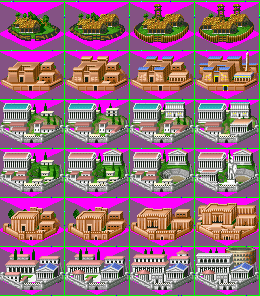
Care & Details – 5/6
One of the best things in BeBro’s scenario is the graphic, that’s
for sure. The icons used for city improvements and wonders look great,
and really imply what it stands for. The events are used very well in
this scenario, and they give the scenario so much extra that it
probably couldn’t last without it. It might have been nicer, if the
author had used more space for in-game messages to tell the player
about the Romans and their history. Because of this, the player doesn’t
know a lot more than what he probably already had in history-class at
school, and that’s too bad.
However, it is very obvious that a lot of effort was put in doing
this scenario, and I think it was all worth it because the result is
just great!
Originality and Technical Proficiency – 5/6
In the scenario I met some units I had never seen before, or
actually most of them I couldn’t remember ever seen before. But then,
it is very hard to remember all units you ever saw in all those
scenarios. But they seemed new to me, so for that I give Bebro full
points.
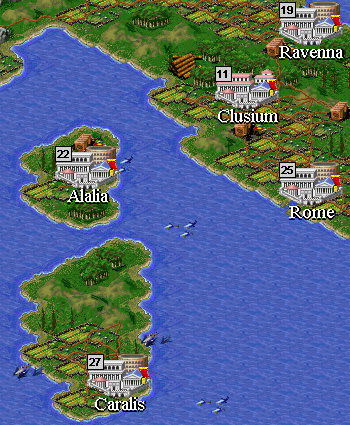
As mentioned before, the events are very well used. The only thing
(again) is that there is no story line and event messages could have
been used to provide the player with more background information. The
creator has put a lot of effort in this, and made a great scenario
which everyone should play.
Overall Assessment and Other Points of Interest
This scenario by BeBro is probably one of the best I ever played.
It has a lot of conquering and a little bit of building as well. The
graphics are done very well, and the title.gif is very good work of
BeBro himself. The only little bit negative thing is the lack of
in-game messages in the events, but that would probably have forced the
author to double the amount of event-files to 6 or 8 per playable
civilization. The fact that this scenario is a multi-file (units, rules
,etc.) indicates once again how much effort BeBro has put into this. I
can highly recommend this scenario to everyone; young or old,
conquerors or builders, economics or scientists, historians or
science-fiction people. It’s a great scenario and it’s hard to not
enjoy it.
